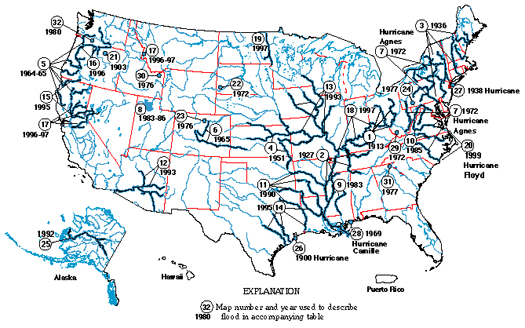
[“During the 20th century, floods were the number-one natural disaster in the United States in terms of number of lives lost and property damage. They can occur at any time of the year, in any part of the country, and at any time of the day or night. Most lives are lost when people are swept away by flood currents, whereas most property damage results from inundation by sediment-laden water. Flood currents also possess tremendous destructive power, as lateral forces can demolish buildings and erosion can undermine bridge foundations and footings leading to the collapse of structures.”
The USGS map above locates thirty-two of the most significant American floods of the 20th century, from the horrific inundation of Galveston during the Hurricane of 1900 (the deadliest natural disaster ever to strike the United States) to regional floods that struck across the United States in the nineties. These floods are classified by cause, ranging from the most common — regional floods caused by heavy precipitation over a sustained period of time — to flash floods, storm-surge floods, dam- and levee-failure floods, and, rarest of all, ice-jam and mudflow floods.]

